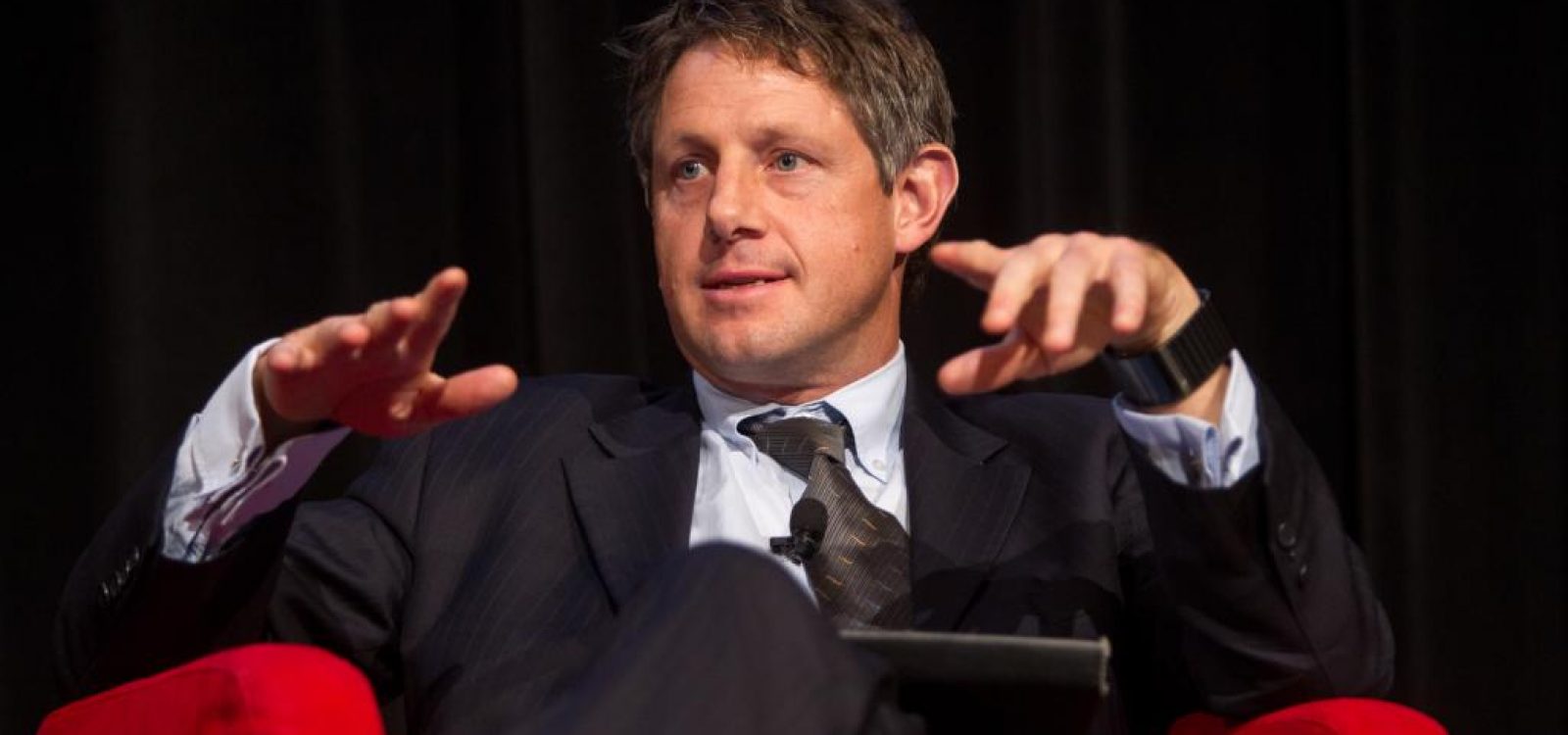
Half Time Reflections on an Actuary’s Contribution
After 30 years as an actuary, IAG’s former Chief Actuary and current Executive General Manager of Risk and Performance in the Personal Insurance division, Tim Clark, talks about what he’s learned at the Actuaries Institute Leadership Forum. Kitty Leung reports.
Actuaries know everything
Early on in his career, Tim, like many other young actuaries probably, thought he knew a lot about everything. After all, actuaries tend to be quite bright and inquisitive individuals with an educational background that provides a great theoretical basis and breadth of knowledge. They understand the system and how everything fits together very well. Tim used his broad understanding and applied assumptions in fancy models to come up with IBNRs which he presented to the business. He will never forget what the underwriter dubbed his analysis – “Interesting But Not Relevant”.
“Tim had done something that many actuaries often do quite naturally when asked to perform a piece of work; dive straight into the data and analysis.”
You see, Tim had conducted his analysis independently and had not thought to involve key stakeholders as part of the process which meant that he didn’t have their buy in. His advice was not trusted nor relied upon which threatened to limit the contribution that he could provide to the business.
Tim had done something that many actuaries often do quite naturally when asked to perform a piece of work; dive straight into the data and analysis.

But others know a lot as well
The underwriter has a much better understanding of the policies as he is the one out there talking to the clients and asking about their business operations. An actuary needs to tap into this knowledge. Looking at just the data and statistics is not enough as changes in experience will only become apparent much later. ‘Soft’ information can be equally as important and provide a better lead indicator.
“How can you tell if the housing market is going up or down? You could collect data on sold house prices and perform some modelling. Or, you could just observe how the real estate agent treats you.”
Tim used real estate as an example to illustrate this. He posed the question “how can you tell if the housing market is going up or down?” You could collect data on sold house prices and perform some modelling. Or, you could just observe how the real estate agent treats you. If he has no time for you, then houses are selling well and prices are going up; if he is willing to bend over backwards and organise private inspections including chauffeur service, then prices are going down!
Actuaries should always challenge their own assumptions to understand the business better. Talking to others often yields answers to questions you didn’t originally ask but were probably what you should have been asking for all along.
Some actuaries know some things
Other actuaries are another good source of knowledge, and networking is an important part of this. Tim recommended being smart about networking, making a plan so that you can get what you need out of it. A good chance to learn from others is by getting involved in projects where there are a lot of different people who you can learn from. Finding out more about how other people think can also help you become more aware of your own unconscious biases so that you can better understand them and reflect on how it might impact on your work.
“It’s clear that you cannot be an expert on all things and that you will have to rely on, and trust others, where your knowledge is lacking.”
If others know lots and I know some things, what don’t I know?
This is the logical question that follows once you become more aware of the limitations of your own knowledge. It’s clear that you cannot be an expert on all things and that you will have to rely on, and trust others, where your knowledge is lacking. But of course you shouldn’t just trust everything that you are told – instead, you need to apply a credibility lens to it.
As an example, if an underwriter tells you that the loss ratio this year will be x% for a long tail portfolio then this should have zero credibility. Instead, if he told you that they are pricing to a loss ratio of x% but that it could be this plus or minus y% then they start to become more credible. If the underwriter can tell you all about the large claim that happened last week and the lessons they’ve learnt from it but that he’s worried about other claim types that might come into the portfolio then this shows they are able to link things together in a bigger system context rather than just giving you the answers that they think you want to hear.
Get curious
Tim encouraged us all to show curiosity in subjects and matters outside of our own work and expertise as it can open up many opportunities. Tim was attending a global risk management conference where he actively participated in the conversations despite this not being his background. This impressed the CRO who then promoted Tim from Hong Kong to Zurich to be the head of Operational Risk.
Be open to feedback
Constructive criticism is a good way to better understand your shortcomings and change. Tim advised creating as many opportunities for people to provide you with feedback and asking them open questions as this may provide you with a response you did not expect.
“At first he hated it and wanted to quit but with the help of a supportive manager, he shifted his thinking and understood that he needed to rely on others to know the details…”
Learn from every interaction
Tim believes you can always learn something from everyone and every conversation. He talked about how an interaction with his young son helped him better understand human behaviour. Tim had caught his son playing a seven-day poker tournament game on his father’s phone and his first course of action was to confirm that the boy wasn’t betting with real money. Once that was established, Tim was curious about why his son was so frustrated – the boy said that he would do well in the first few days, but then he would always lose. It turned out that whenever Tim’s son was dealt a good hand he would bet unlimited leading to small winnings early on. But inevitably as the tournament went on, someone with a better hand would come along and he would be wiped out.
This to Tim illustrated a common behaviour he observed in the workplace. People tend to respond to small positive reinforcements which cloud the potentially large downside risk. In an insurance context, people often think that a policy that has been performing well and making money historically will continue to do so. But this could easily change if the client has a large claim or two. However, this tends to be forgotten and they are offered a low price.
“Tim felt scared and inadequate when he first took on the role of Group Operational Risk Manager as it took him out of his comfort zone…”
It is even more difficult for people to comprehend and think about risks that they have never experienced before (for example, insurance cycles can often be decades long and many people have not even been working for that long a time). Tim spoke about a presentation he gave at an underwriting conference where he tried to bring across the importance of thinking about risk beyond the everyday and what you already know by talking about the Titanic. The tragic accident that occurred was beyond anything that anyone had expected:
- Icebergs were never found as far south as that one was.
- The ship had been built to withstand four panels being breached but alas five were.
- Hitting the iceberg head on would have caused less damage than scraping open the entire side of the ship but these scenarios had never been discussed and the captain did what he thought was best.
Life is not linear
Tim reflected that his career has always been about where he can continue to make a contribution and learn. As such, he has never liked planning out a five-year goal for himself – Tim believes that life is not linear and opportunities do not just come one after another providing you with a step up the career ladder each time. Instead, expect bumps along the way and times when you are unsure about what your next step should be. One needs to develop resilience in spite of challenges and remember that you can always learn something from your mistakes.
Take opportunities
As there is no clear straight path, grab onto opportunities if they come to you and take a risk. Sometimes it might seem like this could be a step back in your career but it may end up opening other paths instead. Tim felt scared and inadequate when he first took on the role of Group Operational Risk Manager as it took him out of his comfort zone and he was no longer at the top of the information ladder. At first he hated it and wanted to quit but with the help of a supportive manager, he shifted his thinking and understood that he needed to rely on others to know the details and let him know the important things so that he could do his job well.
Ensure it reconciles
Tim’s last point was about being satisfied and happy that your opinion and advice is sound. While you need to rely on others as part of your work, you still need to ensure that it makes sense. If you can tell the story behind your opinion, then you understand the underlying issues well and you can stand behind what you’re saying to each respective stakeholder. This will also increase the power behind your words and your credibility when you present your results.
Tim’s reflections were well received by the audience with a Q and A following his presentation. One of the questions asked was whether Tim thinks about what other paths he may have closed off by making the decisions that he has. Tim replied that there is no point in having regrets. He is happy as long as he is still able to learn and contribute, and if you are not enjoying your job then you should go out and change it. However, he did muse that he would have loved to have been a professional footballer.
The full presentation and audio recording of the session is available on the Actuaries Institute site.
Photograph credit: Insurance Council of Australia
CPD: Actuaries Institute Members can claim two CPD points for every hour of reading articles on Actuaries Digital.






